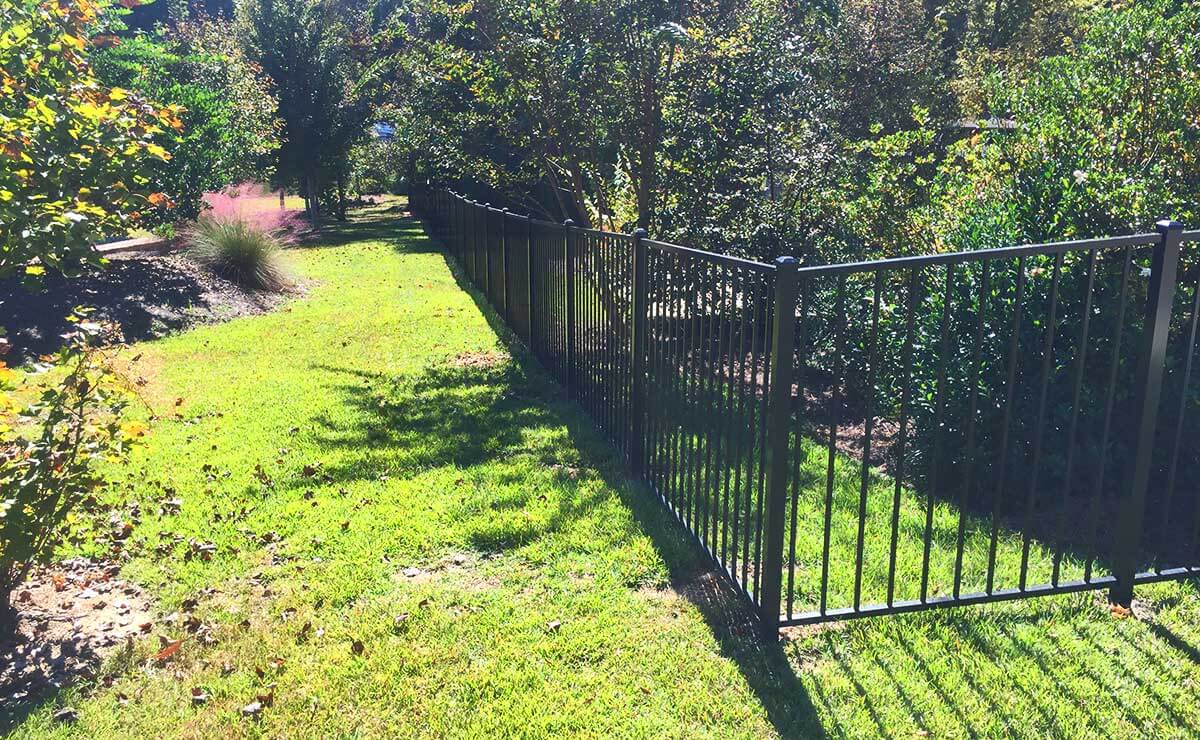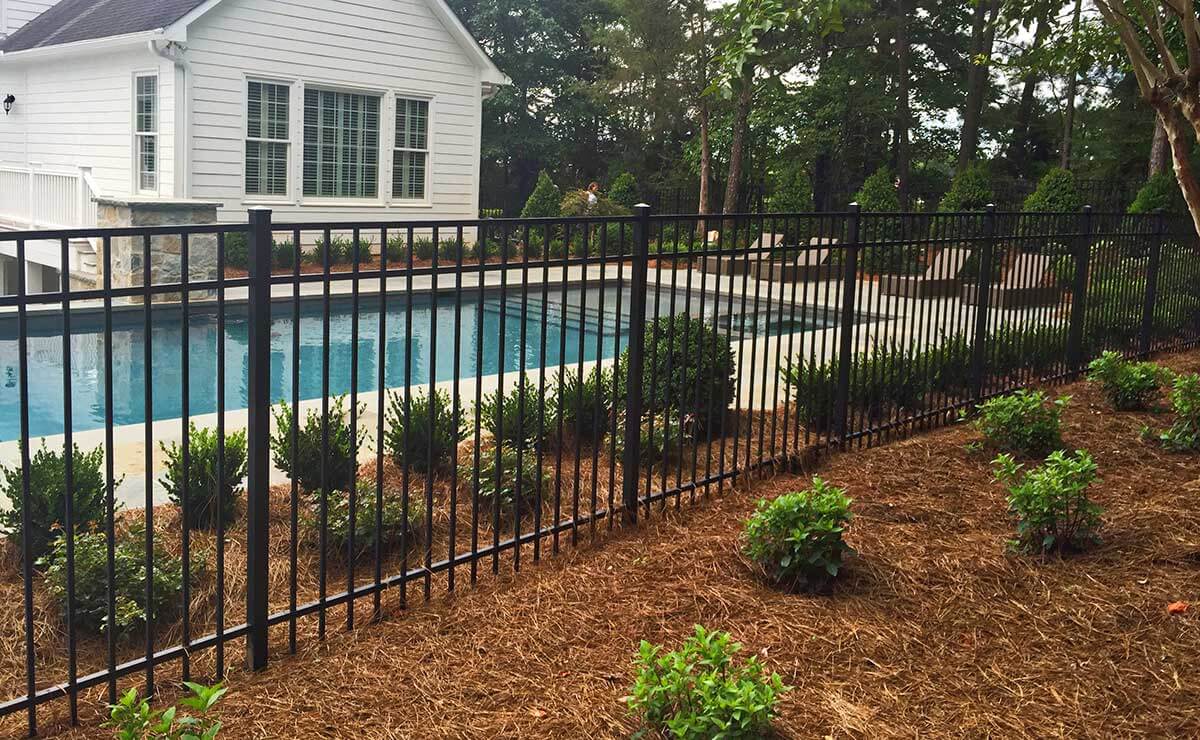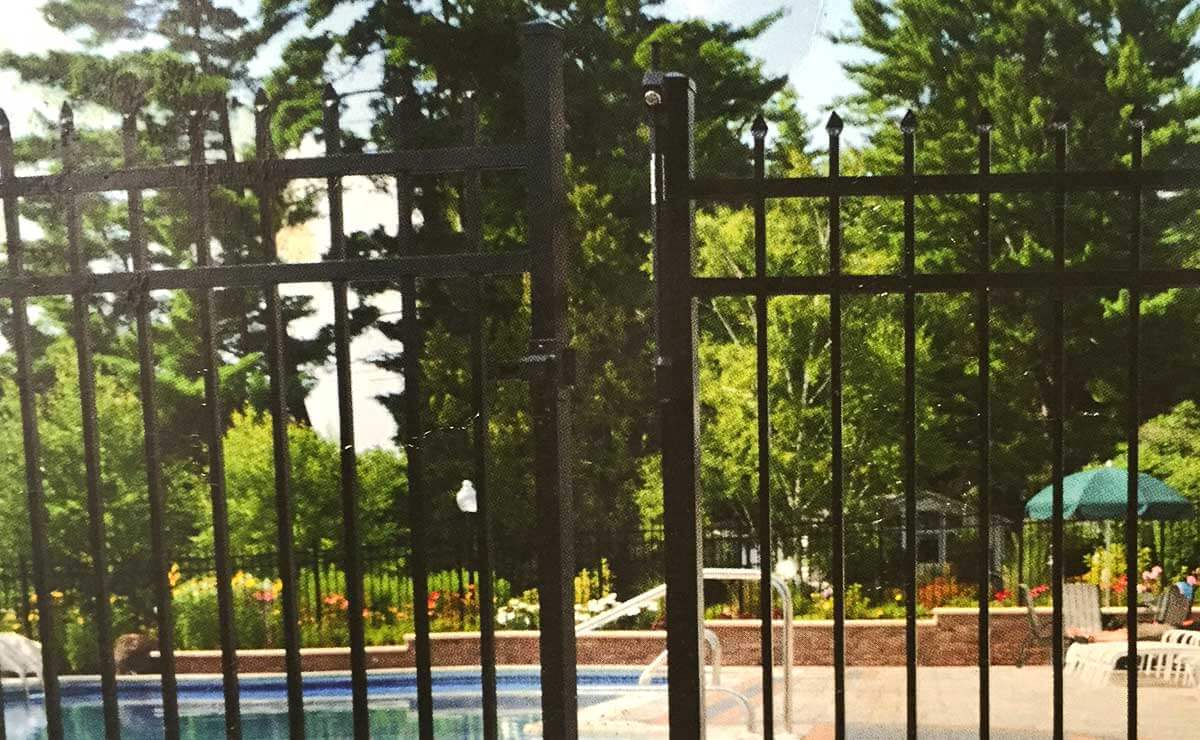


Pool owners have the option of enclosing their inground swimming pool with a fence to not only make it safe for pets and small children but also to add more elegance to their backyard getaway. In fact, some states require pool owners to enclose their swimming pool and breaking this law can result in severe consequences. For this reason, it’s important that you follow the requirements of your local municipality and the pool safety codes by installing a permanent barrier.
The type of pool fence you choose depends on your visual preference, your budget and also on the requirements that are put forth by the local and national authorities. There are various types of pool fences available for you to choose from, such as wood, aluminum and vinyl (PVC).


Choosing wood for a pool fence is a rather economical option for enclosing your inground swimming pool. Depending on the level of privacy you want, you can style it as you like, such as picket and post top cuts into the wood. The wood of the fence should be changed every 7 to 12 years on average, depending on where you live and the weather conditions you experience. A wood fence also requires regular maintenance, for instance you have to seal and paint it every six months, and also replace pickets accordingly.
Aluminum fencing can be made to appear like wrought iron, with the same level of beauty and durability. It is also low maintenance and will definitely enhance the overall look of your outdoor space. With aluminum fencing you have option of choosing between different colors, such as black, bronze, white, sandstone and hunter green. Lastly, you can further customize it with various accessories, such as finials, post caps and scrolls, to enhance the overall design. With little maintenance required, aluminum fencing can last you for many years to come.


In comparison to wood fencing, vinyl fencing is extremely low maintenance. It’s available in a variety of colors, such as white, tan, and grey, and you can also mix and match the colors to enhance the overall look. Vinyl fences can be washed with soap and water, and if maintained properly, can last you for as long as 20 years.
Depending on the municipality you reside in, pool fencing requirements can vary. It’s best that you contact your local permitting office and find out what you need to do when enclosing your pool with a fence. Verifying which codes apply to you beforehand will save you from a lot of hassle down the road.
If you are unsure about the pool fencing requirements in your municipality, contact GEORGIA POOLS. We can help you ensure all national and local code requirements are met when fencing your inground swimming pool. Here are the basic requirements you need to know about from the International Swimming and Spa Code.
Apart from the municipality requirements, you also have to follow the guidelines of your homeowner’s association (HOA). The guidelines may be in relation to your pool fence’s type and color. If your house is managed by an HOA or similar community authorities, it’s your responsibility to find out all the relevant requirements and comply accordingly. Our experts at GEORGIA POOLS can help you fulfill those requirements.